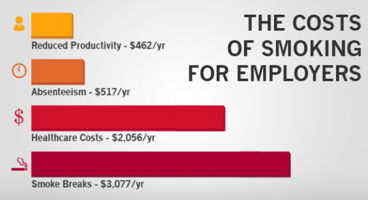

In March, the OIG published a report titled, “CMS’s Process for Sharing Information About...

Recruiters and talent acquisition leaders are focused on diversity and inclusion more today than ever before. Measuring DEI initiatives has become increasingly important for public companies.
The Securities and Exchange Commission (SEC) introduced new disclosure requirements that went into effect on November 9, 2020. They now require public companies to disclose the number of employees and a description of human capital resources, along with any human capital measures or objectives — from the operating model, to talent planning, learning and innovation, employee experience, and work environment. These relevant metrics may include your DEI data.
Additionally, having a diverse workforce makes your company more attractive to job seekers. According to research by Glassdoor, 67 % of job seekers said that a diverse workforce is an important factor to them when considering companies and job offers. Oftentimes we already have a diversity program but fail to communicate to our employee populations and the candidates about our diversity programs. Glassdoor’s research found that the majority of employees were unaware of any current diversity programs at their workplace.
Creating an equitable interview process and initial screening to remove opportunities for conscious or unconscious bias is a good place to start. While every company is different, there are a few steps that you can take to reduce bias in your hiring process and create a more diverse workforce.
Not sharing self-identified status or information on race, gender, and so on is a solid best practice, but it’s also important that anyone reviewing resumes and conducting interviews is trained to eliminate assumptions when making hiring decisions. For example, we can often make assumptions based on a person’s name about whether they are male or female. Training should include how to eliminate these assumptions, including not using pronouns when referring to a candidate until the candidate identifies their preferred pronouns during the onboarding process.
Data can not only help you make more informed decisions and measure the diversity of your hiring pool, it can also serve to remove bias from the decision-making process. Most ATS platforms include candidate diversity self-identification data. However, it should allow you to eliminate personally identifiable information (PII) for screening to eliminate bias for names, locations, etc.
Using gender bias as an example, one study showed that when men and women submitted blind applications, a woman’s likelihood of getting the job increased by as much as 46%.
If you’re using a panel to interview and rate candidates, make sure the people that make up the panel are diverse and represent your company’s culture of diversity and inclusion. Using objective evaluation methods, such as skills tests and work sample evaluations, can help ensure candidates are being evaluated based on their qualifications, rather than on unconscious biases.
Workforce diversity often means seeking out non-traditional talent through community groups, trade schools, immigrant groups, and adult education centers that will partner with your company to match members seeking jobs to your open positions.
Consider veteran’s groups, community resources for disabled persons, refugee centers, government agencies, continuing education programs, and nonprofit training centers. Companies can also reach a more diverse pool of candidates by recruiting through a variety of channels, such as professional associations, community organizations, and universities that serve underrepresented groups.
Background checks must be used appropriately and responsibly, and in compliance with the law to ensure that your screening practices are fair. In addition to following Equal Employment Opportunity Commission (EEOC) guidance, your background check provider is your next best resource to help you support fair hiring and build fair hiring practices.
An accredited background screening vendor partner can support an inclusive hiring process by providing you with a complete picture of a candidate’s qualifications and past experiences. This information can help make more informed hiring decisions and ensure you’re not basing decisions on stereotypes or unconscious biases.
Specifically, background screening can:
It is important to note that background screening should be done in compliance with the applicable laws and regulations such as Fair Credit Reporting Act (FCRA) and EEOC guidelines. A reputable background screening partner can be a resource to help reduce bias in your hiring process and support your recruitment efforts.
Author: Bryan Barajas
Bio: Senior Director of Marketing Operations, Cisive. Music Enthusiast, Indoor Cycling Coach.
Let's Connect on LinkedIn
In March, the OIG published a report titled, “CMS’s Process for Sharing Information About...

At PreCheck, we’ve noticed that a large number of our healthcare clients have initiatives in place...
.jpg?height=200&name=BLOG%20IMAGE_%20Primary%20Source%20License%20Verifications%20(PreCheck).jpg)
Several years ago, my colleague Vu T. Do, PreCheck’s Vice President of Compliance, discussed a...